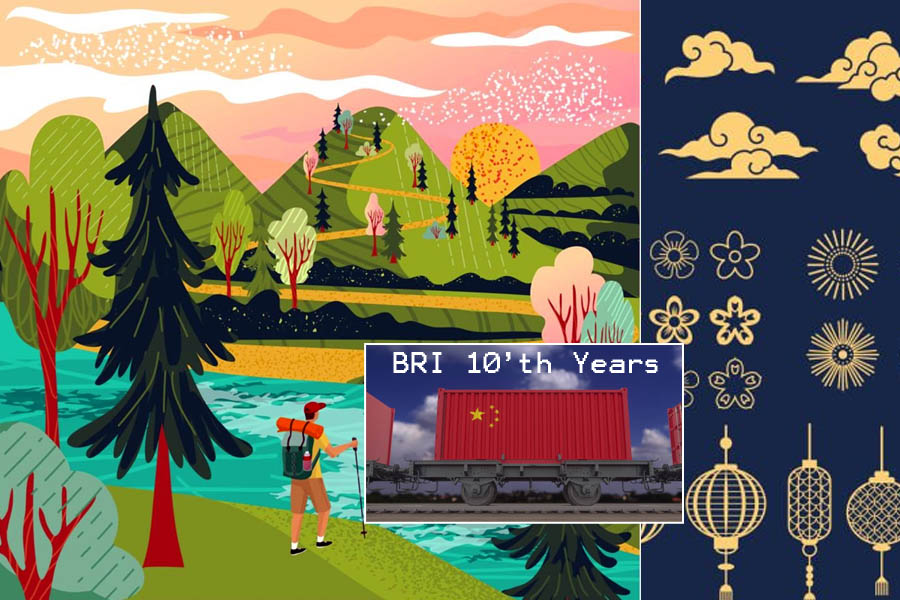
A decade ago, Chinese President Xi Jinping unveiled the ambitious Belt and Road Initiative (BRI), a development policy aimed at fostering global connectivity and cooperation. Over the past ten years, the BRI has evolved, leaving a significant impact on the economies and infrastructures of participating countries, especially in Africa. As the initiative marks its tenth anniversary, it is essential to evaluate its successes, challenges, and the path forward.
The BRI's Foundations: A Tale of Connectivity and Cooperation
The BRI, initially outlined in speeches in Kazakhstan and Indonesia, emphasized strengthening policy communication, road connectivity, currency circulation, people-to-people ties, and promoting unimpeded trade. These principles formed the foundation for a decade of intensive infrastructure development, particularly in African countries.
One of the notable achievements of the BRI has been the improvement in road connectivity. China has played a crucial role in financing and constructing highways, rail networks, and energy projects in various nations. This enhanced connectivity has facilitated the smoother flow of people, goods, and commodities within and between countries, albeit at a cost – most projects have been funded by loans from Chinese banks.
Challenges Faced and Lessons Learned
However, the journey has not been without obstacles. The early years saw reckless lending to impoverished nations, leading to debt-related challenges. China has since recognized the need for more prudent financial practices and a shift towards "small but beautiful" investments, focusing on higher standards and better returns. Yet, transparency and a willingness to collaborate with other lenders remain areas that require improvement.
The BRI in the Global Context
The BRI's expansion has led to debates about its real purpose – is it a genuine effort for international development or a strategy to solidify autocratic regimes? With more than 150 countries on board, the BRI has undoubtedly boosted China's diplomatic and geopolitical influence. Still, concerns have emerged, leading to increased scrutiny and adjustments in the initiative's approach.
The West's Response: Presenting a Better Alternative
As the BRI faces challenges and evolves, it is crucial for the international community, particularly the Western nations, to offer a compelling alternative. Initiatives like President Joe Biden's call to strengthen the role of the World Bank and the IMF, along with the G7's $600 billion plan for infrastructure investment in low- and middle-income countries, demonstrate steps in the right direction.
These efforts are not mere acts of charity; they are investments in a rules-based global order. By providing viable alternatives and ensuring transparency, Western nations can counterbalance the BRI's influence and shape a future where development is inclusive, sustainable, and respects human rights.
Navigating the Next Decade
As the Belt and Road Initiative enters its second decade, it stands at a crossroads. The lessons learned from the past ten years, along with the challenges faced, should guide the way forward. Collaboration, transparency, and a focus on sustainable development are key to ensuring that the BRI benefits not just the participating nations, but the entire global community. By presenting a better alternative and upholding the principles of democracy, human rights, and inclusivity, the international community can steer the course towards a more equitable and prosperous future for all.